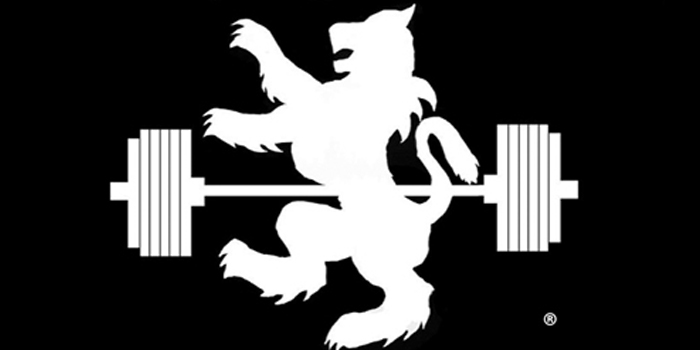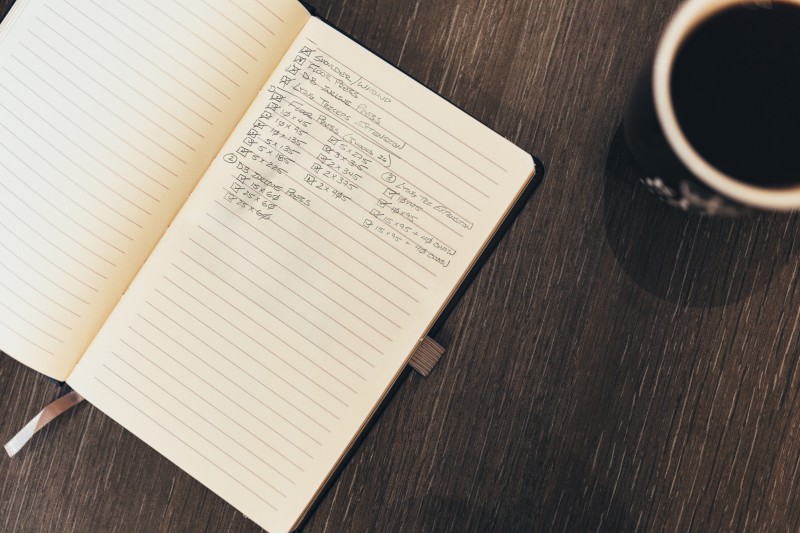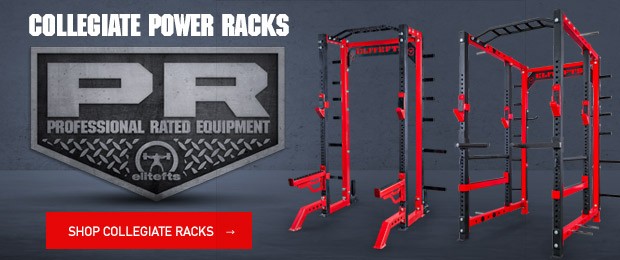
48 years old, three kids, 70-hour workweeks: not training conducive. Much like a running back, when a training lane opens, I have to act quickly or risk losing all momentum. If I sit on the couch for even a few minutes, I will be done. Training typically starts with McTarnahans Absorbent Blue counterirritant liniment and warm-up lotion. As an aside, you can purchase it in the gallon size (and if you happen to have an equine friend, all the better). I slather it — chest, shoulders, and triceps on upper body day. This is part of my pre-workout ritual.
I have been consistent in writing my programming (in full) before entering the gym. I am fairly meticulous about tracking my training. I have always been diligent in this way; which is to say, at a minimum, I have historically recorded all my training during (or following) the session. I inexplicably need to switch between pen and pencil, depending on my mood and stress level. Sometimes black ink, often blue ink, occasionally mechanical pencil. But when it is rolling, an old-school lead pencil is my utensil of choice. This eccentricity is a whole other story.
RECENT: Fivearms and Sibling Rivalry
When recording my training, near the top of the page, I will write a broad list of the main exercises I need to complete during the session (probably redundant, as the detail will follow below). It will look comparable to below, with no sets or repetitions (that comes later):
- Warm-Up
- Floor Press
- Dumbbell Incline Press
- Lying Triceps Extensions
I draw a square box next to each line item and check them off as I complete each exercise. If I am completely honest, sometimes I mark a dot in the middle of the box while I am still performing the exercise. The dot is so tantalizing close to a check mark that I benefit from the additional endorphin release. I will spare you the details on the warm-up, as it’s just not that exciting. Underneath the warm-up detail will look something like this (again, each line item is preceded by a little square box to check as I complete the sets):
- Floor Press (J Hooks 26)
- 10 x 45
- 10 x 95
- 10 x 135
- 5 x 135
- 5 x 185
- 5 x 225
- 5 x 275
- 3 x 315
- … and so on, culminating in doubles and/or singles
I record the dumbbell incline presses and lying triceps extensions following the same pattern.
Gym Observations
The garage gym is getting a lot of use as of late, I am happy to say. It is frequently rumbling with high school baseball players and occasionally an eighth-grade lacrosse athlete or two. Of course, there is always the washed-up meathead. I am pervasive.
A few weeks back I was in the gym with my son and another baseball player (we will call him Mark for the purposes of this article). I was in the middle of floor press (the training routine as mentioned above) and they were busy doing their own thing. I casually observed their program while resting between sets. Seemingly all they were working on was arms — the beach muscles. If you are a parent, you will understand what I am about to suggest. You can speak to your children until you are blue in the face, offering sound advice, but sometimes they have to learn on their own. And sadly, often they learn the hard way. I have spoken to my son dozens of times about training for baseball and the programming he should be doing. He has taken some advice, but for the most part, he is doing what he wants to do. Having big biceps and losing flexibility doesn’t equate to improved throwing, yet I know intimately that size and strength are incredibly enticing to the teen trainee. I have preached enough.
My son, Harrison, is undoubtedly the training leader. And fortunately (or unfortunately, in this case) Mark, for the most part, will do whatever he says. Harrison's been involved in and around training for years, including several years at Beast, where he was a trainee. When he wasn't training, he was frequently in attendance as a thoughtful observer. Harrison has seen us put many athletes through their paces in what we consider to be the core multi-joint lifts: squat, deadlift, and bench press, plus a whole collection of other exercises. He mostly knows what he is doing and, in Harrison's defense, most of the recommendations he dispenses are solid. Yet as I am about to describe, this day felt a bit like being in the Twilight Zone.
To paint the full picture, Mark is a reasonably new trainee. When he first stepped into our gym, he was as thin as a pipe cleaner. After about a year of semi-regular training, he looks like a slightly muscular pipe cleaner. I swear there is not an ounce of fat on this kid. He must eat like a bird.
“I just don’t want to get too bulky,” Mark said to Harrison.
“Well, you are in no danger of that happening,” I replied. The words just flew out.
Below is my recollection of their training protocol. All of the below were performed for multiple sets of medium-to-high repetitions:
- Barbell Curls
- EZ Bar Curls
- Dumbbell Concentration Curls
- Triceps Pushdowns
- Triceps Pushdowns (Single-Arm with Palms Pronated)
- Triceps Pushdowns (Single-Arm with Palms Supinated)
- Direct Forearm Work (Rotations with The Wrist Reinforcer)
Holy volume!
Training Volume
Shortly after I completed my training, I was sitting at the kitchen island scarfing down a steak when Harrison walked through. Evidently, they were done with their marathon session, too.
“Mark still here?” I asked.
“No, he went home,” Harrison replied.
“Do you mind if I give you some unsolicited advice concerning how you are training Mark?”
“No,” he said.
“Way too much volume,” I said. “Especially for Mark, who is still relatively new to training.”
“We only do a lot of volume on arm day,” he said.
“First of all, you guys don’t need a specific arm day at this stage. You are hitting arms in many of the other aspects of your training. I know you are still going to do it, but I wanted to express my opinion again.”
We both chuckled.
“As far as Mark goes, you should just stick to the basics with him. You are still working to build his training foundation. Work the main lifts hard (squat, bench, and deadlift) and throw in an assistance exercise or two at most and then call it a day. I think it will help his motivation, too. If he doesn’t leave here as volume-fried, he may be more inclined to come back.”
“He has already made a ton of gains,” Harrison added.
“Yeah, well he will make even more if you cut down the volume and keep up the intensity on the main lifts. I think you will be pleasantly surprised.”
“Okay. I’ll keep that in mind.”
Summation
The first time I walked into a large commercial gym with my older cousin, he said, "Don't believe everything you see."
Don't believe everything you see. That was over 30 years ago, and I still think about those words. They are perhaps truer today, in the day of YouTube and Instagram, where online training gurus post only their best performances and old-school training methods may seem too hard or just not as exciting. These influences create a crazy maze for young trainees to navigate. I am thankful for the influencers at elitefts who still understand (and continue to teach) that for most early participants, a straight arms day should be considered only after 10 hard years under the iron, earning those gains in a power rack.
For those early in their training career, focus on a single compound (multi-joint) movement for the main lift. For the lower body, use the squat, front squat, and deadlift. For the upper body, use the bench press, incline press, standing or seated military press, and heavy rows or chin-ups. Add one or two assistance exercises and call it a day.
For those of you training for baseball: it is an explosive sport! Jumping, lateral hops, medicine ball explosive slams, and a ton of core and flexibility work are the preferred programming prescription. Leave these modalities out at your peril.











